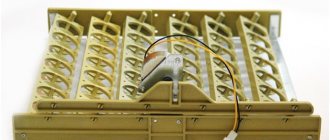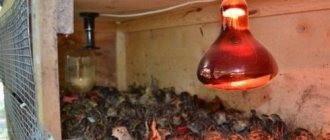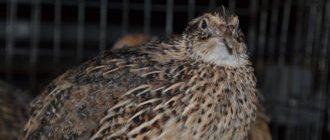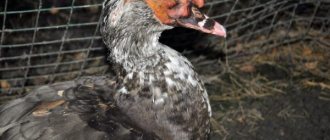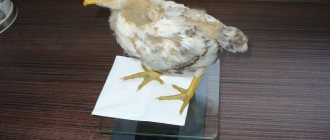What comes before cutting?
Before hitting store shelves and tables, a chicken carcass goes through several stages of preparation. The following are produced sequentially:
- slaughter A fattened chicken is caught by the legs, placed in a confined space, and given water to completely cleanse the intestines. The bird is then killed by electrocution or mechanical means (cutting off the head or cutting the arteries);
- bleeding. The bird's body is hung upside down so that all the blood drains into the prepared container;
Bleeding a chicken carcass before plucking - plucking. The feather covering is removed mechanically or manually from the still warm carcass and washed;
Plucking chicken at home - evisceration. The internal organs are removed from the chicken;
- cutting The resulting carcass is cut into portions.
Cutting chicken for barbecue
Chicken kebab is less popular than pork, but is popular with those who prefer more tender meat. Cutting poultry to prepare such a dish requires time and skill. How to cut chicken into portions?
Do this:
Rinse the carcass.
Lay on your back.
Using a sharp knife, separate the wings.
The last, outermost phalanx can be cut off and thrown away.
Chop off the legs.
Cut the drumstick from the thigh (if the leg is large, you can cut it into four parts).
Separate the breast from the backbone and cut into 4 pieces.
The back and throat are not used for barbecue.
Carefully pierce the pieces with a skewer, parallel to the bone, and string them tightly together.
Why is it so important to learn how to properly cut up a chicken?
The quality of carcass processing directly affects the taste of the meat. If the intestines or spleen are touched during gutting, the organ fluid will flow out and be absorbed into the pulp. Such chicken will have an unpleasant odor and bitter taste.
The quality of carcass processing directly affects the taste of meat
In addition, professional cutting skills allow you to use parts of the carcass as economically as possible. Knowing the nuances, it is easy to make preparations for a soup set, meat for frying, baking, salads, separate fillets for minced meat and pieces for feeding animals. For farmers, this is also an undeniable plus, since semi-finished products sell better than whole chickens.
Dressed chicken is easier to sort and store
Proper cutting is also rational from the point of view of allocating space in the refrigerator and freezer. The carcass takes up a lot of space, while even pieces are easily laid out like “Tetris”.
Finally, an organized, streamlined process takes less time and stress. Perfected movements are performed quickly, a minimum of waste eliminates lengthy cleaning.
Useful tips
In order to cut up a chicken quickly and accurately, and then not waste time on cleaning, you can use the advice of experienced chefs:
- To work, prepare a knife, scissors, board, bowl or other container for pieces of chicken, and place a trash can nearby. By placing the cut elements in a bowl rather than on the table, the latter will remain dry and clean.
- To process the carcass, use a special meat cutting board. If you don't have one, you can take the plastic version. It, unlike a wooden model, will not absorb moisture and odor. As a last resort, a regular wooden board can be wrapped in cellophane.
- In the process of cutting off the legs and wings, be sure to feel the joint and turn the limb in order to clearly see the place of the cut. There is no need to saw the bone, even if the knife is very sharp and you have a lot of strength in your hands. Proper cutting produces neat pieces without bone fragments.
Dividing poultry into parts is necessary not only for preparing dishes, but also for convenient, compact storage of meat in the refrigerator. At any time you can take out a bag or container with the desired part of the chicken and cook soup, make goulash, or fry a cutlet.
It’s not difficult to process a chicken carcass, but if you don’t want to deal with a whole bird, you can order portioned pieces in marinade or ready-made from the Shashlik Market online store
| Chicken lula kebab | Chicken wings marinated | Marinated chicken fillet |
Preparation for cutting
Before starting work, you need to prepare tools and space. Gutting is a rather dirty process, so it is preferable to cover the surface of the table, surrounding equipment and furniture with oilcloth. It is advisable to protect your clothes with an apron and put on cellophane or rubber gloves on your hands.
For the operation you will need:
- board. It is better to use an option made of flexible or hard plastic.
Wood absorbs all odors and juices, and glass may not withstand pressure. If you choose a wooden option, you should wrap the device in cellophane or use a board exclusively for cutting meat; For cutting, it is best to choose plastic cutting boards. - dish or pan. The removed giblets or finished pieces will be placed in the container. To make cleaning easier, you can immediately line them with cellophane;
- knives. There are special knives for gutting and cutting with a curved end.
If this is not available, you can get by with wide and narrow knives made of thick steel and with a strong handle; Professional knife for cutting and gutting poultry - cutting fork. Allows you to remove the heart, lungs, liver, intestines, crop, and stomach from the carcass without damage. The action occurs with a minimum of effort, unnecessary movements and dirt;
Gutting fork
- kitchen scissors. Good for cutting tendons of wings and legs. Replaced with a knife.
Chicken cutting tool set
Prices for meat cutting knives
Meat knife
This set is considered ideal, but you can get by with a couple of knives of different sizes. Tools must be well sharpened and washed before starting work.
When the tools are collected, the final stage of preparing the carcass is carried out:
- Amputation of head and paws. If decapitation is not carried out during slaughter, it is easier to carry out with a culinary or household ax.
The paws are cut off along the tendon near the lower cartilage or also chopped off; Before gutting, the paws and head are removed from the carcass - Removal of the anus. A neat cut is made around the anus, being careful not to touch the intestine. There is no need to rush at this stage. The resulting piece is thrown away. In the case of roosters, notches are made on the tail to expose the yellow glands - the testes, which will be removed further;
Anus removal
- Goiter extraction. The skin around the neck is incised.
The goiter is pulled out with effort but smoothly. With a normal incision, the tubes of the larynx and esophagus will come out after the goiter. If the chicken is slaughtered according to the rules, the crop will be free of food residues and will not create dirt; Goiter extraction - Opening the skin to the keel. To ensure that the internal organs are visible during evisceration, a small skin incision is made from the resulting rear hole along the body. Then the skin will crack on its own or you can tear it with your hands.
Gutting
Preliminary operations are completed. You can begin direct gutting. It is advisable to carry out the process as soon as possible after plucking. This way it will be possible to avoid rotting and fermentation of waste residues in the gastrointestinal tract. This chicken processing step by step is as follows:
- Intestines. Pick up the intestine with one hand through the posterior opening obtained earlier.
Hold the tail with your other hand. Pull the organ out, being careful not to tear or spill the contents, if any. With good skill, it is possible to pull out the intestines even when the anus is removed, along with it; Bowel removal - Liver and stomach. When processing these organs, accuracy is very important, as is the case with the intestines.
The joints are torn with a knife, and the elements themselves are removed. At the same time, they try not to pierce the spleen or cut it off from the liver. Ideally, they are extracted together and separated afterwards. This ensures that the bile is isolated from the meat; Liver and stomach - Larynx and esophagus. Pull out in a bunch. The step is necessary if the crop was previously torn away from these parts;
- Genital organs. Using a pointed knife or scissors, cut off the testes of roosters and the ovaries of laying hens;
- Heart and lungs. They are removed after cutting the corresponding arteries and surrounding fibers.
This is where the gutting ends. Processing of food giblets is carried out. Fat and arteries are cut off from the heart and lungs. The liver is freed from the spleen. The stomach is incised, everted, and the contents and inner layer of rough skin are removed. The resulting products are washed with running water.
Gutting with a carving fork
A lighter version of gutting can be done using a carving fork. After removing the anus, crop and intestines, it is inserted into the carcass. It is important not to damage the organs. All connections will be cut off by the sharp edges of the device, the insides will remain in it, they will be easy to remove. With good skill, all films and “fastenings” can be cut with a thin, sharp knife. Then turn the chicken over a plate and shake lightly. The giblets will fall out on their own.
Evisceration with legs cut off and belly ripped open
There is a trick for cases where the bird is not originally intended for cooking or selling whole. In this version, the process is accelerated by cutting off the legs and opening the abdomen immediately after amputation of the anus. The body will open completely and it will be easier to remove the entrails.
Video - Gutting a chicken or rooster in 8 minutes at home
How to disassemble a bird?
If you don’t know how to properly cut a chicken, then, as mentioned above, two methods are perfect for this. Both the first and second methods of cutting chicken will not pose any difficulties when doing it at home. As for which option to choose for you, we can’t advise you here. Both methods are good and quick to implement, so give preference yourself, and below are cutting diagrams for both options.
Option one
This method will allow you to quickly and economically cut a whole chicken carcass into pieces. At the same time, the work can be easily done at home with an ordinary kitchen knife. Below is a detailed description of the process with thematic photos and videos.
- First, separate the chicken legs. To do this, we place the carcass on its back, pull back the leg and cut the skin between it and the body. As soon as you reach the joint, you need to stop, grab your leg with one hand and turn the joint outward. Next, we separate it with a knife and completely cut off the leg. We do the same with the second leg.
- Now we divide each leg into two parts: the lower leg and the thigh. We place the leg with the skin on the table and separate it along the flexion joint with sharp pressure from the knife. We do the same with the second leg.
- Cut off the wings at the shoulder joint.
- Next, you need to cut the carcass into breast and back. To do this, we insert a knife inside the carcass and pierce it. Now, slowly, towards ourselves, parallel to the spine, we divide the carcass in half.
- Now completely separate the back from the breast. Then we additionally cut the back and breast in half.
Option two
This method will be useful to you if you need to cut a whole chicken into pieces that are approximately equal in the amount of meat. It is also easy to do at home using improvised means, and thematic photos and videos will help you with this.
- First you need to prepare to cut out the legs. To do this, we make cuts on the back of the chicken, below the shoulder blades. Then on both sides along the ridge towards the tail we make 2 more cuts. This will help us easily remove the meat from the bone, which is called an “oyster”.
- The “oyster” bones are located in small depressions along the ridge on the back side. Carefully separate them with a knife. When they stick to only the skin, cut off the legs.
- The legs are cut out as in the first option, but in addition the “oyster” is captured.
- Let's start cutting out the wings. To do this, turn the carcass upside down and make an incision between the spine and one of the shoulder blades. Now the blade is separated, and then everything is repeated with the second wing. Upon completion, the spine is completely separated.
- At this stage you need to separate the breast and wings from the skeleton. To do this, we cut the carcass from the inside along the spine.
- Now we cut off the wings from the breast so that we get 3 equal pieces - 2 wings and a piece of breast.
The final stage of any cutting method is thoroughly washing the resulting parts. These options for disassembling chicken are the main ones. But no one forbade you to come up with your own version based on the above and your own needs.
Source: prokyr.ru
Cutting chicken at home
The term “cutting” refers to the final processing of the carcass with cutting into pieces. This operation can be carried out in various ways depending on the purpose.
What's the best way to disassemble a bird?
The method for disassembling the carcass depends on the plans for the meat. The whole chicken can be grilled, oven-baked, or boiled. For other cooking methods, chopped versions are used. Different parts are suitable for different dishes, so choosing the type of parsing is a crucial step:
- waste-free cutting. It is used most often by housewives, since it allows you to prepare semi-finished products from one bird for various dishes, including a soup set.
The pieces are not too large. This option is the most economical; Chicken cutting - portion cutting. The chicken is cut into pieces, removing excess. The method is great for baking, frying, and grilling. You can stay with the usual symmetry of the pieces or align them all in size;
- boneless cutting. The meat is removed from the bones whole to prepare rolls or in pieces for grinding into minced meat.
How to cut up chicken without waste
First of all, the carcass is washed under water and dried so that it does not slip in your hands. Then place it breast side up on a cutting surface. The following actions occur step by step:
Step 1. Make cuts at the junction of the thighs and torso. Holding the leg, the leg is pulled back to separate the joint, slightly turned inside out and the final cut off from the body is made. This stage can be supplemented by separating the thigh and lower leg. The joint of the joint is felt with fingers and cut with a knife.
Cutting off the leg from the carcass
Step 2. Cut off the wings. Pull and turn them out in the same way as chicken legs. When the humeral cartilage comes out, cut it off from the carcass. The final sharp element can be cut off along the cartilage or left.
Wing clipping
Step 3. Cut the breast lengthwise. Remove the fillet from the bone using a blade. You will get two pieces of pulp and a back connected to the ribs.
Step 4. Cut the spine down the middle. Cut off the ribs from the back. The step is optional; it is made if necessary to obtain smaller parts.
Step 5. Remove excess fat from the resulting chicken elements. Also done at personal discretion.
Zero waste cutting option
The result is:
- breast fillets, thighs, drumsticks and wings - for frying, boiling, stewing, baking;
- back, ribs, wing tips - for cooking broth;
- fat - for frying.
Video - How to cut chicken without waste
How to cut a chicken carcass into 8 parts
This cut includes 8 pieces. It is considered a classic. It can be modified by cutting the breast into 10 pieces. The ideal tools are a sharp knife and kitchen scissors.
Step 1. Find the joint of the hip joint from the carcass lying on its back, carefully cut through the flesh. Then insert the knife into the joint of the cartilage and cut it. Or pull the thigh with your hands until the bone pops out of the joint.
Separate the leg
Step 2. Turn the chicken onto its stomach. Make an incision along the flesh of the thigh along the back. It should go around the entire perimeter of the thigh.
Step 3. Separate the drumstick and thigh at the knee joint. A clue to the correct location of the incision is the fatty stripe at their border.
Separation of the thigh and lower leg along the fat line
Step 4. Cut off the wings. Feel the joint between the carcass and the wing under the breast. Point the knife directly at the joint. The separation will take place without any extra effort.
Cutting off the wings
Step 5: Remove the breast. For this operation it is better to use scissors. This way the cut will be as neat as possible. Place the carcass on its side. Cut through the border of the back and breast along the fat strip from beginning to end. Repeat on the second side.
Separating the breast from the back
Received breast
Prices for kitchen scissors
Kitchen scissors
Step 6. Remove the sternum bone. Turn the breast skin side down. Make longitudinal cuts on both sides of the cartilage. The meat will come away from it. Through the resulting incisions, grab the bone with your fingers just above the junction with the cartilage. Pull forcefully. The hard elements will leave the soft fillet.
Removing the bone from the breast
Step 7. Cut the resulting breast vertically into two parts. It is most convenient to do this from the skin side.
Cut breast
The result is 8 pieces:
- 2 breasts;
- 2 hips;
- 2 drumsticks;
- 2 wings.
The end result of cutting into 8 parts
The back in this version is considered a waste, but it can be used for cooking broth.
How to cut chicken into equal portions
For such cutting you will need to fill your hand. It may not work out the first time. Only persistent training will ultimately allow you to achieve even, beautiful pieces.
Step 1. Place the carcass on its back. Cut off the legs at the cartilage joints. The process will become easier if you press the leg against the work surface, make an incision in the flesh and slightly turn the thigh out. The cartilage will open and it will be easier to find the place of articulation.
Legs are cut at cartilage joints
Step 2. Cut the drumstick from the thigh at the bend.
Step 3. Divide the remaining carcass into 2 halves. A pair of vertical incisions will be required along the spine and sternum (on either side of them).
Step 4. Cut the pieces obtained in the third stage horizontally in the center into 2 parts each.
Cutting into equal pieces
The result will be 8 pieces, almost identical in size:
- 2 drumsticks;
- 2 hips;
- 2 lower breast halves;
- 2 upper breast halves with wings.
Grilled chicken
This treatment looks especially impressive when grilled or frying in a pan. The bones with pieces of meat remaining in the waste are suitable for broth.
Boneless cutting
Separating meat from bones is useful when preparing minced meat, meat rolls, and semi-finished products from the pulp (breast and thigh fillets). It is important not just to be able to cut meat, but to maintain a presentable appearance of the pieces. The highest aerobatics is considered to be removing bones from the entire carcass without damaging the skin. Farmers supplying chicken products to restaurants may encounter this unusual order. Such skill is appreciated and is an undeniable advantage for the seller.
Boneless cutting
For such processing, the knife must be as sharp as possible. It is advisable to sharpen it specifically for this purpose. The tip needs to be thin. Scissors will also come in handy.
Public method
| Description | Photo |
| Incise the skin vertically along the entire back. You can start in the same way with the breast, but this increases the risk of tearing the carcass. The bones in the dorsal part are located very close to the skin and, when pressed, easily damage it. | |
| Using gentle movements of the knife, begin to peel the meat from the skeleton. The direction of movement is from the tail from bottom to top. Break the ischium, hip and wing joints. Expose the ribs. Help yourself move the pulp with your hands. | |
| Release the femur completely. To do this, trim the veins in a circle and move the meat with your fingers. | |
| Maintaining the connection between the thigh and the body, scrape off the flesh with a “stocking” to the outer cartilage. Upon reaching the bottom point, cut the upper joint. | |
| Turn out the resulting stocking. Repeat all steps on the second side. | |
| Trim the ribs with scissors. Remove the fork and keel bones, trimming the remaining joints. | |
| The wings remain on the carcass directly with the bones or are cut from the skin in an even strip. The process is complete. |
Private method
| Description | Photo |
| Through the lower hole in the carcass (through which gutting is also carried out), cut the tail and expose the ischial frame. | |
| Make an incision with jerky movements up to the upper femoral cartilage. For convenience, tuck the skin and pulp a little during the process. Break the joint with a blade at the junction. | |
| Trim the veins around the entire circumference of the ham bone. Break the maple joint at the point of contact with the shin. Repeat the above on the other side of the carcass. | |
| Trim the meat from the ribs to the neck, continuing to tuck the skin with the flesh already removed. | |
| If there is a neck, pull it out with a sharp movement of your hand. Cut the breast fillet from the carcass and break off the wing joints. Remove the fork bone. | |
| Peel the flesh of the drumstick around the circumference, cutting the ligaments. Cut off the bone before the cartilage. | |
| Take out the skeleton. Turn out the skin and meat. |
The closed version is ideal for stuffing a carcass. Using the above diagram, you can peel meat from chopped pieces. The only difference is that you don’t have to worry about the integrity of the skin.
Video - Removing bones from chicken
Video - How to remove bone from chicken leg
Cut the chicken into equal parts
Some dishes require gutting the chicken into approximately equal parts. You can do this quickly and correctly by following some tips.
First you need to disconnect the legs according to the rules listed above. Then divide the hams into thighs and drumsticks. Separate the breast from the back without cutting out the wings. After this, cut the breast along a vertical line into two parts. The meat is not separated from the bone, the skin is not removed.
The last step is to cut each breast half horizontally into two approximately equal parts. As a result, we get 8 portions:
- 2 upper breast segments including wing;
- 2 lower breast segments;
- 2 thighs;
- 2 drumsticks.
This cut is good for grilling chicken - the portions are equal, they are fried equally, and they look great on a served table.


